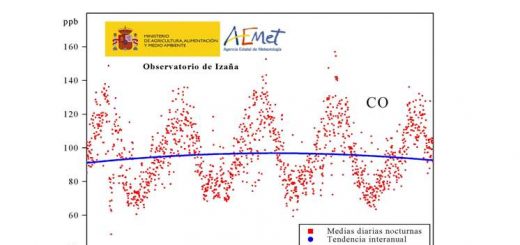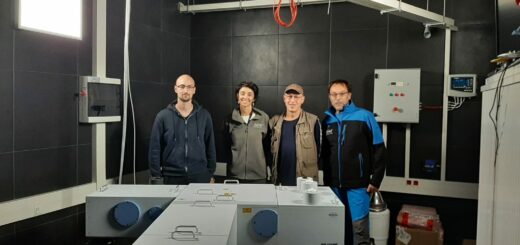Seminar Abstract: Characterization of the total column aerosol properties in the subtropical region
This seminar is a general rehearsal with audience of the PhD dissertation that will be defended by Carmen Guirado Fuentes at the Valladolid University during the second half of June 2015. The next paragraphs contain the abstract of the PhD dissertation.
This Doctoral Thesis work focuses on the characterization of atmospheric aerosols over a large area in the subtropical region of the Northern Hemisphere covering the Sahara Desert and the eastern North Atlantic region. The approach used in the analysis of atmospheric aerosol optical properties is the solar photometry technique which provides aerosol content and properties in the atmospheric column.
The subtropical belt of the Northern Hemisphere is mainly covered by desert and oceanic regions, so ground-based aerosol measurements are very scarce. Natural aerosols, mostly composed by sea-salt aerosols and mineral dust, are the main constituents, although some mixing with anthropogenic aerosols also exists. The Sahara desert is one of the most important mineral dust sources in the world, which is the subject of growing interest among the international aerosols research community.
This study providing aerosol characterization in the wide subtropical region firstly includes the development and deployment of an optical calibration facility at the Izaña Atmospheric Research Center (IARC; State Meteorological Agency of Spain). This facility is essential for IARC as a fully AERONET (AErosol RObotic NETwork) sun photometer calibration facility. Secondly, an accurate analysis of relatively long data series of aerosol optical properties was performed in the Saharan continental boundary layer, the marine boundary layer, and the clean free troposphere, using data from AERONET and ancillary information.
Data from Tamanrasset (Algeria) were used as a strategic AERONET station in the heart of the Sahara desert, which plays a key role in dust model and satellite borne sensor evaluation. The deployment and operation of this station is the result of a joint effort of IARC, the Atmospheric Optics Group (University of Valladolid), and the Laboratoire d’ Optique Atmosphérique (University of Lille). Furthermore, IARC is involved in relevant international aerosol research programmes conducted in Tenerife (Canary Islands, Spain). Therefore, data from two AERONET stations in the island, Santa Cruz de Tenerife and Izaña, were selected to perform a detailed and accurate analysis and characterization of aerosols in marine boundary layer and free troposphere background conditions over the North Atlantic Ocean, and to assess the impact of dust-laden Saharan Air Layer outbreaks over the North Atlantic.







